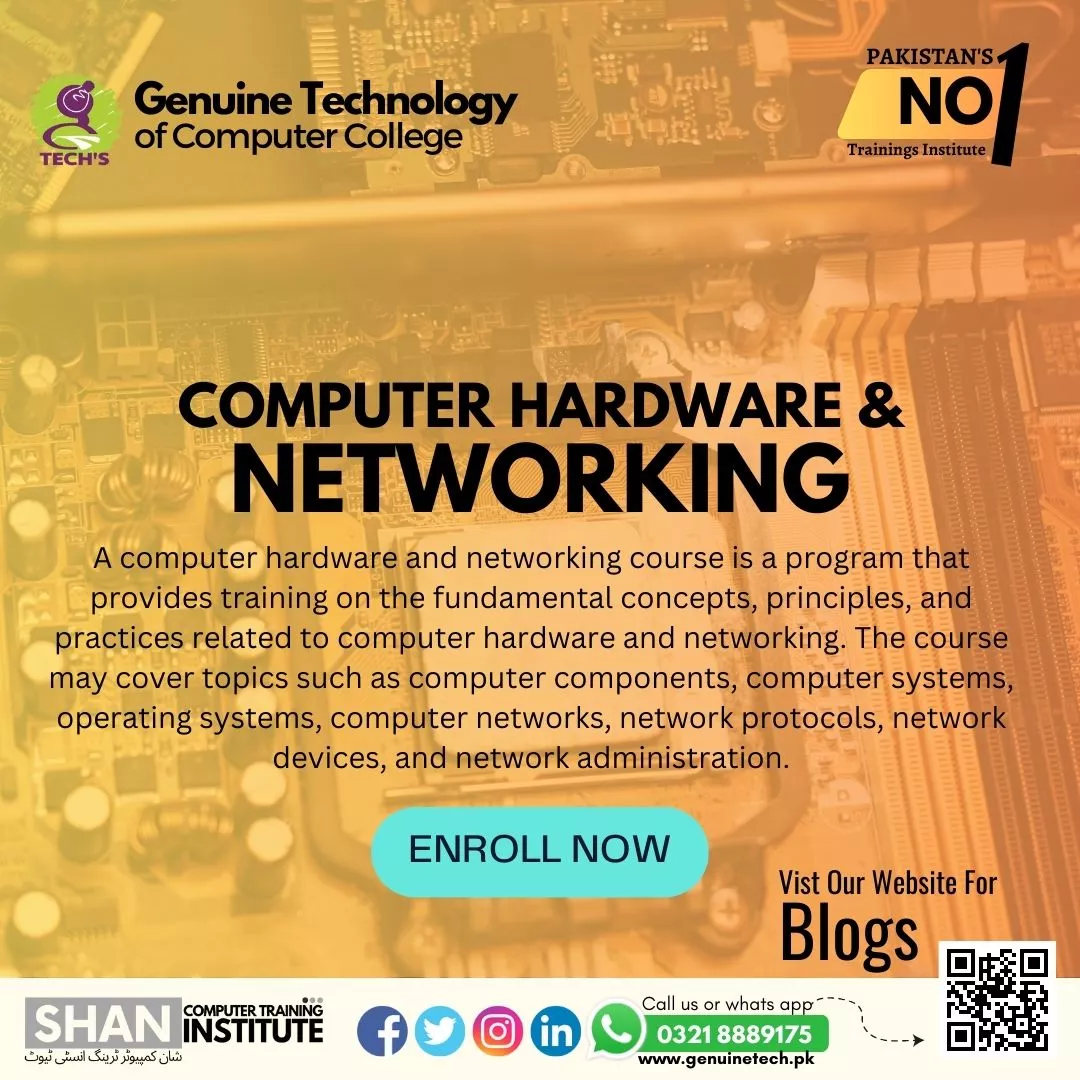Computer Hardware Networking Course
What is happening to Universal Analytics? - Shan Trainings
Computer Hardware & Networking Training Course in Lahore after FA for Boys and Girls unlock the career opportunities and skill development in computer networking or computer hardware you may learn about the basic of computer fundamentals and principles of networking you can choose your career as a computer technician or a computer networking engineer in the job market this is one of the high in demand computer course through which you can join multinational companies as well and earn a lot of money we may cover each and every important topic in this computer hardware & networking course candidates can learn;
- Basics of Computer Hardware and their components
- Learn about Motherboard and CPU architecture
- Work on Operating systems like Windows, Linus and many more
- Introduction to networking concepts
- learn IP address and device components
- Networking security
- Cloud Computing
- Troubleshooting methods and techniques
- Computer Software and Platforms
Upon the completion of this best networking & hardware training students can start their own setup or can join any organization for earning purposes you can start basic computer fundamentals like motherboard, CPU, rom and ram hardware components and become an expert computer hardware then networking portion is started in which you may learn the basic networking concepts like IP address, network security and many more this is the top computer course for beginners as well as for professionals to enhance their skills and become hardware & networking engineer.
Upon the completion of this course you can get a certificate which may help you get employment in job market in future at the time of job interview for students who cannot enroll in our networking & hardware training physically can join our online diploma in computer hardware and network engineering to become master in this profession and enhance your skills in IT networking field.
For more info you can visit fcit.usf.edu here you can get more documentation about hardware.


If you want to get further details and update about computer trainings course don't hesitate direct whatsApp chat, call or visit and follow Facebook page, Instagram and get more information LinkedIn accounts
